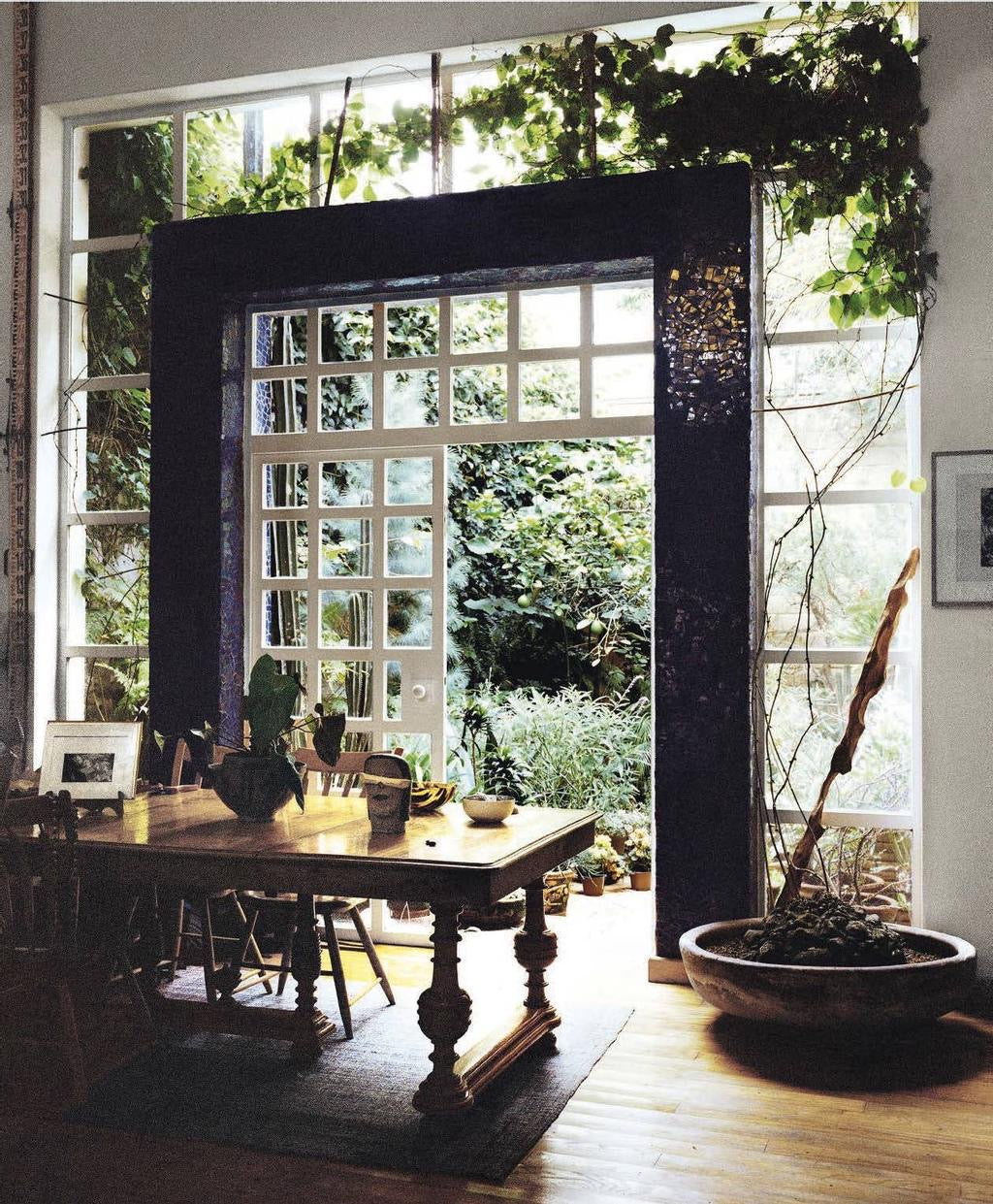Other Voices, Other Rooms

When Truman Capote was visited by Architectural Digest in 1976 at his Sagoponack hideaway, he described its method of construction as a "raincoat." All the same, it's what the literary luminary was after. "I wanted a rustic house. I really think of it as one big room. Completely winterized, it’s been designed to look unfinished. I call it ‘run-down comfort.’ I like the effect of texture in rooms—the rawness of the wood plus the mirrors that line one end.” In the heart of the Hamptons, tucked behind a lush expanse of potato fields, the secluded getaway paints an intimate portrait of the writer's inner workings.

The home's sleek yet sunbaked exterior features the raw wood finish typical of the area. Large, faintly Nordic windows are the dominant architectural focus. A cozy, unpretentious spirit pervades.

The bi-level living room adds a theatrical dimension to Capote's otherwise relaxed seasonal escape. And yet the writer made note, “I’m here to work. I come here a lot in the autumn and winter, and I see almost no one. I don’t care for the Hamptons in the summer—it’s gotten too crowded. I don’t understand the way some people come out here and run themselves ragged every night. I just don’t think some of these writers are working.” With the home's glossy cerulean floors, two-story-high built-in bookshelves, buttery amber leather sofa, comfy upholstered vintage chairs and eclectic antique accents, the space has a beachy, easy-going glamour that's rich with humor and personality.

A steel spiral staircase leads the way to the living room's loft-like upper level. The theme of painted wood floors continues, though here in palest buttercup.

A rhythmic use of materials and textures ties everything together; cheerful needlepoint, painted Victorian and contemporary wicker furniture and warm blond wood continue concepts from below, helping tie together the writer's quirky, personal mix of art and carefully curated memorabilia.

Capote's "witchcraft altar," as he apparently called it, included a surreal needlepoint pillow of a mask designed by the artist Cocteau, fresh flowers, an antique bronze bell and a curious piece of folk art, a painted wooden cat with an arched back and bared fangs.

A Tiffany table lamp casts a richly luminous glow across the author's collection of glass paperweights and books. Intimate photographs and 19th century floral lithographs shed even more light on the author's sensibility.

One can only imagine the author sitting here, in the early hours, penning the final excruciating pages of In Cold Blood.

Perhaps most striking to me of all are the author's spartan sleeping quarters. Somehow warm and luxurious despite their severe curation, Capote's minimalist treatment of his place of rest feels perfectly in keeping with his approach to art.
Photo: Jaime Ardiles-Arce for Architectural Digest; Architectural Digest: Celebrity Homes, ed. Paige Pense (1977)


